Apple Watch Series 7 vs Samsung Galaxy Watch 4: Which should you buy?
How do our two favorite smartwatches stack up against each other?
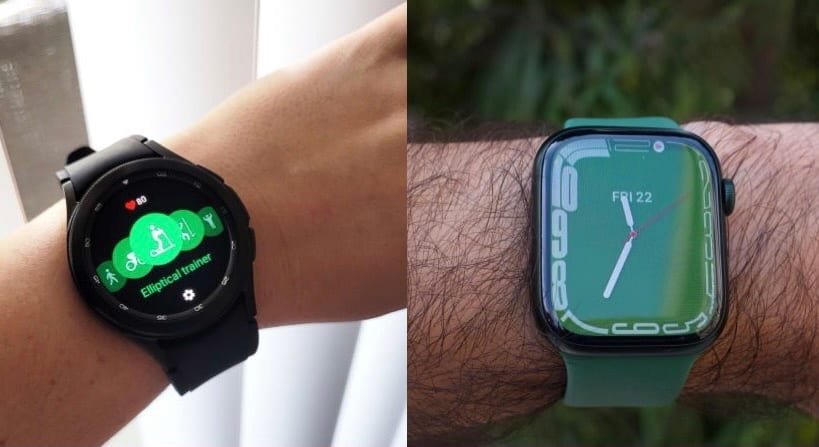 Credit:
Reviewed / Joanna Nelius / Jordan McMahon
Credit:
Reviewed / Joanna Nelius / Jordan McMahon
Products are chosen independently by our editors. Purchases made through our links may earn us a commission.
The walls around the garden are getting taller. While it's always been a bit of a hassle to switch between platforms, the inclusion of pricier accessories like smartwatches and wireless earbuds that only work with particular devices have made the prospect of switching trickier than ever.
Neither the Apple Watch Series 7 or Samsung's Galaxy Watch 4 are cross-platform, so while their high price tags will earn you some nifty features like sleep tracking and convenient notifications, they'll also serve as another reason to stay put on your respective platform. If you're going to splurge on a pricey smartwatch, it should be good enough to justify the lock-in that comes with the extra purchase.
Get the Samsung Galaxy Watch 4 Get the Apple Watch Series 7
Device Support
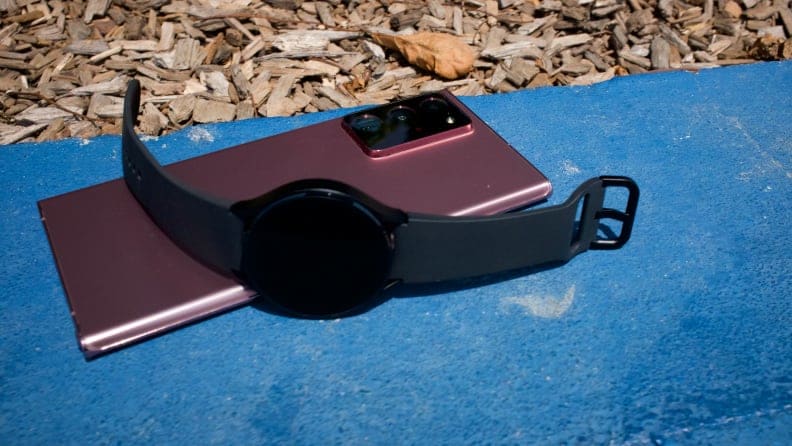
Even though the Galaxy Watch4 is great, an accompanying Samsung Phone is basically a requirement.
As we noted in our review of the Galaxy Watch 4, it's the first of Samsung's smartwatches to require a Samsung device for the best experience. Although it's compatible with other Android devices, such as the Google Pixel 6, you'll have to install a few extra apps during setup. The Galaxy Watch 4 also won't work with iPhones at all, unlike the Galaxy Watch 3.
Nothing's changed on Apple's end with the Apple Watch Series 7, which only works with iOS devices. While that's a bit of a bummer, that's always been the case with Apple's devices.
Our pick: Galaxy Watch 4
Connectivity
Both the Apple Watch and the Galaxy Watch have GPS and GPS+Cellular options, and all come with 802.11b/g/n 2.4GHz and 5.0GHz Wi-Fi and Bluetooth 5.0. With both watches, the cellular models will require an additional monthly payment on your wireless plan (usually around $10/month).
Our pick: Tie
Health and Fitness Tracking
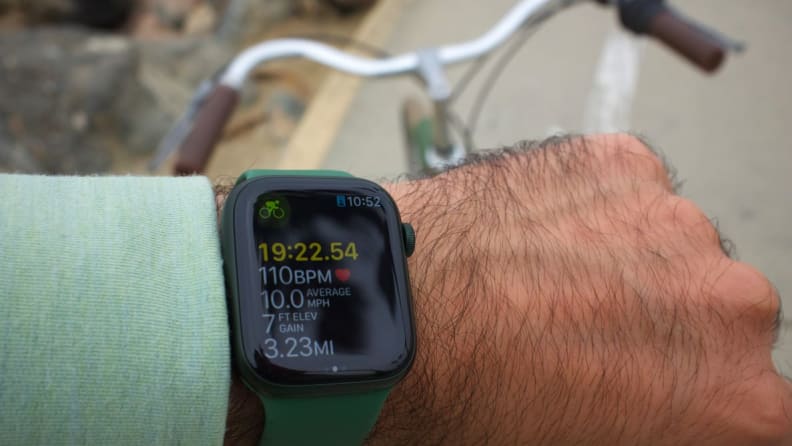
The Apple Watch Series 7 is the first Apple Watch to automatically detect cycling workouts, and it does so pretty quickly.
Both the Series 7 and the Galaxy Watch 4 have an array of sensors that can routinely scan your body metrics to monitor things like heart rate, time asleep, and even blood oxygen level.
Like the Apple Watch Series 6, the Series 7 is packed with an ECG (electrocardiogram) and optical heart sensor, as well as a blood oxygen sensor. Nothing inside has changed with the Series 7, which means it all works just as well as the Series 6, but also means you can probably skip the upgrade, too.
While both watches can track workouts ranging from runs and walks to bike rides and hikes, the Apple Watch Series 7 has the added benefit of automatically logging cycling workouts. Older Apple Watches could only do this for walks and runs.
The Galaxy Watch 4 also has an ECG sensor, optical heart sensor, and bioelectrical impedance analysis sensor, which sends a tiny electric charge through your body to get an approximation of your body composition.
Overall, both watches successfully logged blood oxygen levels, hours slept, calories burned, and miles walked. It’s important to remember, though, that these measurements may not be entirely accurate, and are better suited for tracking progress over time than using them as hard-set data points.
Our pick: Tie
Voice Assistants and Third-party software
Unfortunately, there isn't a contest between Apple's Siri and Samsung's Bixby. Siri is still better at things like summoning directions, running timers and using the internet to answer simple questions. Bixby has a harder time with setting timers and can’t run multiple timers at once like the Series 7 can.
The Apple Watch also has the benefit of iOS and watchOS's vast pool of apps that plug into Siri, which allows you to do things like add tasks to your to-do list app of choice, play a song on Spotify or Pandora, and play the latest podcast in your queue.
Google's Wear OS, which powers the Galaxy Watch 4, doesn't have nearly as many apps to choose from, so while the apps available might have voice control options, the pickings are slimmer. It’s understandable that Samsung would opt for its own assistant, but it should ensure it’s as capable as the competition before doing so. Until then, the Watch 4 would be better powered by Google’s more capable Assistant.
Our pick: Apple Watch Series 7
Display
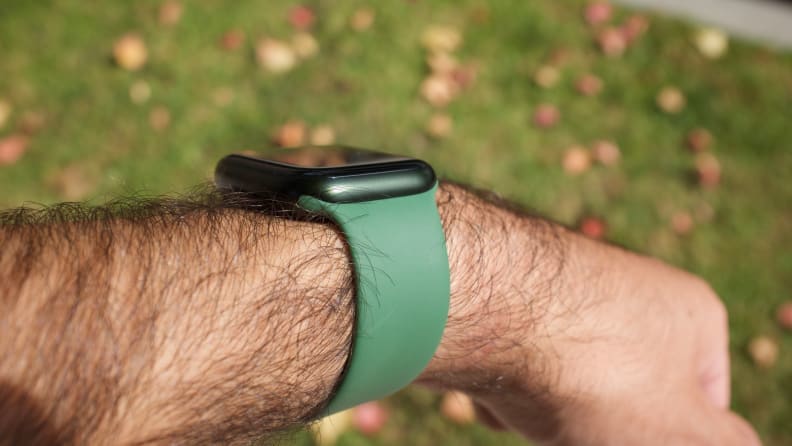
Unless you're in direct sunlight, it's hard to distinguish the green casing from the black option.
The most notable change to the Series 7 is its bigger display (41mm and 45mm, compared to last year's 40mm and 44mm options). The 41mm model features a 1.69-inch display, and the 45mm model is bumped up to a 1.9-inch display. Both still have an OLED display with a rounded square design, with resolutions of 484 x 396 (45mm model) and 430 x 352 (41mm model). The larger display mostly makes text easier to read (there's even a few extra font sizes), but the extra space does allow for a little more information to be shown on screen than previous models.
Meanwhile, the Galaxy Watch 4 features a round, 1.6-inch Super AMOLED display with a resolution of 450 x 450 for the 44mm option, and a 1.2-inch display with a resolution of 396 x 396 for the 40mm model.
Both displays look great indoors and in direct sunlight. The Series 7 has a slightly larger display, but unless you're frequently interacting with your watch, you won't notice the difference.
Our pick: Apple Watch Series 7
Price
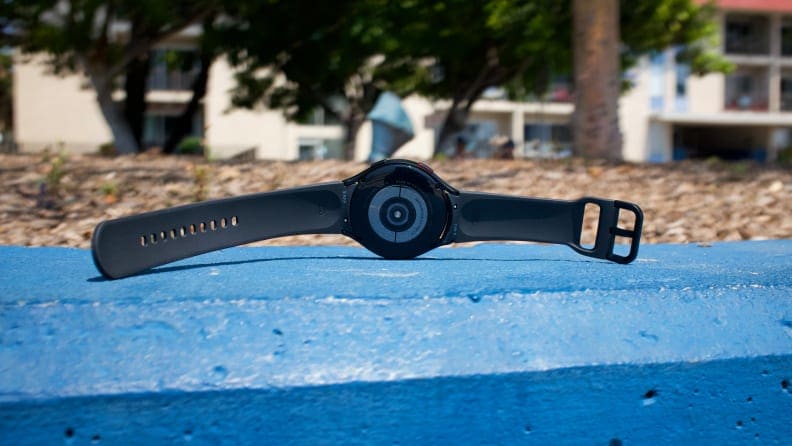
The Galaxy Watch 4 is packed with sensors to track all kinds of health metrics, including new body fat and skeletal muscle measurements.
The Galaxy Watch 4 starts at $250 for the 40mm model and goes up to $330 for the 44mm cellular option. The Watch 4 Classic, which is identical to the Watch 4 aside from its physical bezel, starts at $350 for a 42mm model and $380 for the 46mm option.
You'll have to pay a little more for an Apple Watch. The 41mm model starts at $399 without cellular and goes up to $499 for GPS and cellular. The 45mm option starts at $429 for the GPS-only model and goes up to $529 for the cellular model.
Our pick: Galaxy Watch 4
And the winner is...
Picking the right smartwatch is more about the phone you prefer than it is about the objectively best watch. So in the case of Apple’s Watch Series 7 versus Samsung’s Galaxy Watch 4, picking a winner isn’t as clear-cut as, say, the M1 iPad Pro versus the Microsoft Surface Pro X. The Galaxy Watch 4 is compatible with other Android devices besides Samsung, but the Watch Series 7 has a slight edge over with a larger display and other features. Ultimately, they both sort of even each other out.
Most smartwatches, including the Galaxy Watch and Apple Watch, only work with a select few devices, and more versatile options like the Fossil Gen 6 come with some limitations. Unless you're willing to drop a few extra hundred bucks or more on a new phone just to use the smartwatch that checks all your boxes, you're sort of stuck with whatever's compatible with your phone of choice.
Luckily, there's at least one good watch you can use without making too many sacrifices. Those in the Apple ecosystem won't be disappointed by the Apple Watch Series 7, though it's worth saving your money if your Series 5 or 6 is still chugging along fine. Meanwhile, the Galaxy Watch 4 provides a great smartwatch experience for Android users, while costing a little less than the Apple Watch. (Although if you’re still rocking a Galaxy Watch 3 it’s also worth saving your money for now).
If you're really hung up on the two, the Apple Watch has a slight advantage thanks to its larger display, better app support, and better voice assistant. That won't do you much good if you're an Android user, but if you're in the market for a new phone and you're a heavy smartwatch user, the Apple Watch Series 7 might be enough to sway you.


